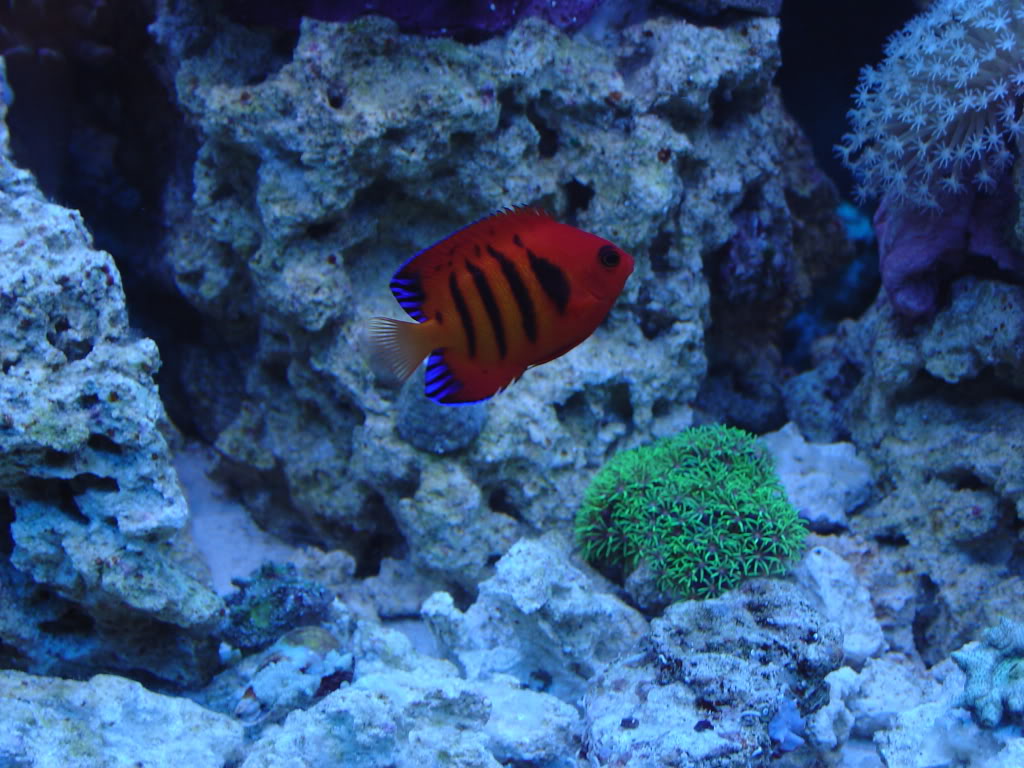Why Is the Flame Angelfish a Favorite in Reef Aquariums? - smitjohn98/blog GitHub Wiki
 If you've spent any time around saltwater aquarium enthusiasts, you’ve probably heard about the Flame Angelfish. With its fiery red-orange body and bold black vertical stripes, it’s no surprise this fish gets a lot of attention. It’s one of the most recognizable and sought-after dwarf angelfish. Many aquarists search for Flame Angelfish For Sale early in their reef tank journey because it brings a burst of life and motion. Its popularity isn’t just about looks—this fish has a mix of qualities that make it a standout.
If you've spent any time around saltwater aquarium enthusiasts, you’ve probably heard about the Flame Angelfish. With its fiery red-orange body and bold black vertical stripes, it’s no surprise this fish gets a lot of attention. It’s one of the most recognizable and sought-after dwarf angelfish. Many aquarists search for Flame Angelfish For Sale early in their reef tank journey because it brings a burst of life and motion. Its popularity isn’t just about looks—this fish has a mix of qualities that make it a standout.
Bright Colors That Draw the Eye
One of the first things people notice about the Flame Angelfish is its color. The vivid red body is trimmed with electric blue edging on the fins. The contrast makes it pop under aquarium lights. It stands out in any tank setup, from simple live rock layouts to full coral gardens. If your goal is to keep things visually exciting, this fish is a natural fit.
Compact Size Works for Many Tanks
Unlike larger angelfish that demand massive tanks, the Flame Angelfish stays relatively small. It typically grows to around four inches, which makes it a good match for medium-sized reef tanks. Aquarists with tanks starting at 30 gallons can often provide a comfortable home. Its size allows for more flexibility in planning your tank community.
Personality That Keeps Things Interesting
The Flame Angelfish isn’t just a pretty face—it has a lively personality too. It’s active, curious, and often seen darting in and out of rockwork. Many hobbyists describe it as bold but not overly aggressive. It will keep your eyes busy as it constantly moves through the tank, checking things out and making sure it doesn’t miss anything.
Compatibility With Most Reef Setups
Many reef keepers worry about whether certain fish will bother their corals. That’s a valid concern. The Flame Angelfish has a bit of a mixed reputation here. Some individuals nip at soft corals or clam mantles, but many don’t. It really depends on the fish’s personality. If you’re running a mixed reef, it’s worth monitoring their behavior. In many cases, they behave just fine and coexist peacefully with corals.
Hardy and Adaptable in Captivity
No one wants to bring home a fish that struggles to adapt. The good news is, Flame Angelfish usually handle the transition from the store to your tank well—especially if they’re captive-bred. They are generally hardy, provided water quality stays consistent. Once settled in, they often live for five to seven years in home aquariums. That kind of longevity makes them a rewarding investment.
Feeding Is Pretty Straightforward
Feeding Flame Angelfish doesn’t require anything fancy. They’re omnivores, so they’ll eat a mix of marine flakes, pellets, and frozen food. Offering a variety helps support their color and keep them in top condition. Some aquarists also like to clip seaweed sheets to give them some plant matter during the week. The key is to keep meals consistent and avoid overfeeding.
Works Well in Community Tanks
With the right tank mates, the Flame Angelfish can be part of a peaceful community. It’s best not to house it with other dwarf angelfish unless you have a very large setup. In smaller tanks, this may lead to territorial behavior. Fish that mind their own business—clownfish, gobies, wrasses—usually get along well with them. It’s all about giving everyone enough space.
Looks Great Against Live Rock and Coral
A big part of the appeal comes from how it looks in a natural setting. The deep red and orange of the Flame Angelfish contrast beautifully with green macroalgae, live rock, and coral. It’s one of those fish that always looks good, no matter where it is in the tank. Watching it swim through coral arches or hover over the sand adds something special to the daily view.
Does Well in Single or Pair Setups
Some aquarists keep one Flame Angelfish as a centerpiece fish. Others keep them in mated pairs. If you’re thinking about a pair, it’s important to introduce them at the same time and give them room to establish their territory. Starting with a smaller individual and a larger one can help reduce conflicts, as this mirrors their natural pairing behavior in the wild.
Quarantine and Acclimation Tips
Even hardy fish can get stressed from shipping. Before adding a Flame Angelfish to your main tank, it’s smart to quarantine it for a couple of weeks. This gives you time to watch for any signs of illness or parasites. Slow acclimation is key—use the drip method to help them adjust to your tank’s water parameters. A smooth start leads to better long-term health.
Not Just for Experts
A big reason this fish has become a favorite is its beginner-friendly nature. You don’t need decades of reef-keeping experience to enjoy it. While it does best in a stable, mature tank, it doesn’t demand advanced care. That makes it a realistic choice for intermediate hobbyists looking to step up their tank’s visual appeal.
Final Thoughts
The Flame Angelfish stands out in both looks and personality. It’s colorful, active, and adaptable to a wide range of tank setups. Whether you’re building a reef from scratch or adding a final touch to an established system, this fish brings energy and color without making things too complicated. That balance is why it remains one of the most popular reef-safe species available today.